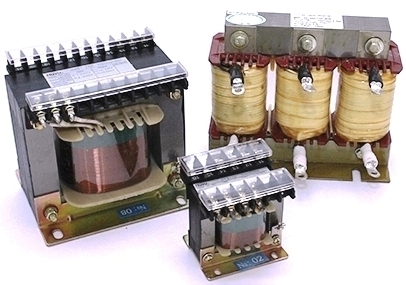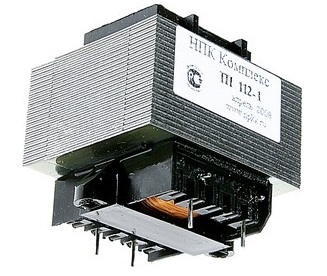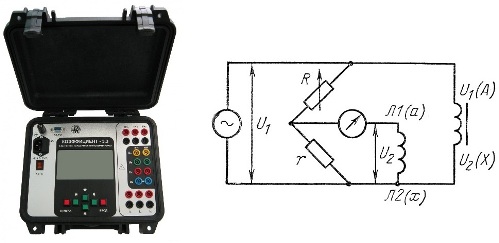How to calculate the transformation factor
The transformation coefficient «k» is the ratio of the voltage U1 at the ends of the primary winding of the transformer to the voltage U2 at the terminals of its secondary winding, determined at idle speed (when there are several secondary windings, there are also several coefficients k, they are determined in this case in turn). This ratio is taken to be equal to the ratio of the number of turns in the respective windings.

The value of the transformation coefficient is easily calculated by dividing the EMF indicators of the windings of the transformer under study: the EMF of the primary winding — by the EMF of the secondary.
The transformation ratio is very important as the value by which the secondary winding is brought to the primary. In operating conditions, the voltage transformation ratio is of great importance, which is understood as the ratio of the rated voltage of the transformer.
In single-phase transformers there is no difference between the ratios of EMF and voltage transformation, but in three-phase transformers they must be strictly different from each other.
Ideally, power loss (on Foucault's currents and for heating the windings) in the transformer are completely absent, therefore the transformation ratio for ideal conditions is calculated by simply dividing the winding terminal voltages. But there is nothing perfect in the world, so sometimes it is necessary to resort to measurements.

In reality, we are always dealing with a step-up or step-down transformer. Voltage transformers that increase the transformation factor are always less than one (and greater than zero), for step-down ones, more than one. That is, the transformation ratio indicates how many times the load current of the secondary winding differs from the current of the primary winding, or how many times the voltage of the secondary winding is less than that supplied to the primary winding.
For example, step-down transformer TP-112-1 has a transformation factor of 7.9 / 220 = 0.036 according to the passport, which means that the nominal current (according to the passport) of the secondary winding of 1.2 amperes corresponds to the current of the primary winding of 43 mA.
Knowing the transformation ratio, by measuring it, for example, with two voltmeters at idle, you can make sure that the ratio of the number of turns in the windings is correct. If there are several brackets, then measurements are made on each branch. Measurements of this type help to detect damaged windings, determine their polarity.

There are several ways to determine the transformation factor:
-
method of direct measurement of voltages with voltmeters;
-
by the AC bridge method (for example, a portable instrument of the "coefficient" type for analyzing the parameters of three-phase and single-phase transformers);
-
according to the passport of this transformer.
To find the real transformation ratio, they traditionally use two voltmeters... The nominal transformation ratio is calculated by dividing the voltage values measured at idle (they are indicated in the passport of the transformer).
If checked three-phase transformer, then measurements should be made for two pairs of windings with the smallest short-circuit current. When the transformer has conductors, some of which are hidden under the casing, the value of the transformation coefficient is determined only for those ends that are accessible from the outside for connecting devices.
If the transformer is single-phase, then the operating transformation ratio can be easily calculated by dividing the voltage applied to the primary winding by the voltage on the secondary winding, measured by a voltmeter at the same time (with the load connected to the secondary circuit).

With regard to three-phase transformers, this operation can be carried out in different ways. The first way is to supply three-phase voltage to the high-voltage winding of a three-phase network, or the second way is to supply single-phase voltage to only one winding of three, without or with a neutral point. In each variant, the line voltages are measured at the terminals of the same name of the primary and secondary windings.
In any case, it is impossible to apply a voltage to the windings that significantly exceeds the nominal value indicated in the passport, because then the measurement error will be large due to losses even without load.
The best method is to measure the voltage ratios between the secondary and primary windings using high-precision voltmeters (accuracy class 0.5 maximum). It is even better, if possible, to use a special device of the "coefficient -3" type - a universal meter of the transformation coefficient, which does not require the connection of additional sources of mains voltage to the transformer.
For analysis current transformers, in order to calculate its transformation ratio, a circuit is assembled where a current from 20 to 100% of the nominal value passes through the primary winding of the transformer, and the secondary current is also measured.
Thus, the transformation ratio of the current transformer is found empirically: the numerical value of a given primary current I1 is divided by the value of the measured current in the secondary winding I2. This will be the transformation ratio of the current transformer. The found value is compared to the value of the passport, if there is a passport.

A current transformer with multiple secondary windings can be dangerous. Before starting measurements, all secondary windings of the current transformer are short-circuited, otherwise an EMF measured in kilovolts may be introduced into them, which is dangerous to human life and equipment. Most current transformers require grounding of the magnetic circuit, for this there is a special terminal on their boxes, marked with the letter «Ж» — grounding.
